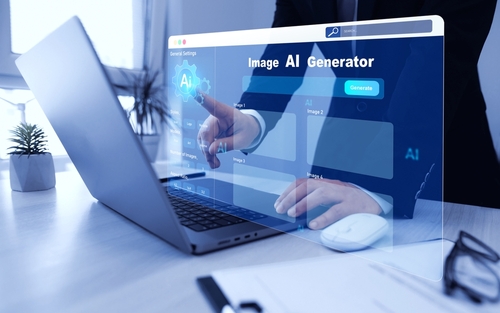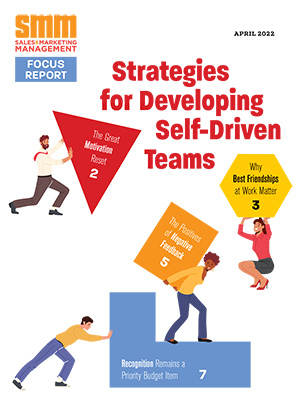AI-generated visuals are transforming how brands create and scale content, personalize experiences and reduce production costs. But there’s a catch. If AI-generated content doesn’t align with a brand’s established aesthetic, tone and values, it risks looking generic, or worse, inauthentic.
But brand authenticity isn’t just about consistency. It’s about trust. Consumers recognize when visuals don’t match a brand’s identity, and an inconsistent look can erode credibility. The challenge isn’t whether to use AI-generated imagery, it’s how to do so while maintaining brand authenticity.
Here are six ways to strike the right balance.
1. Define and enforce visual guidelines for AI-generated content.
AI can generate thousands of image variations, but without clear boundaries, those images may lack cohesion. Establish and enforce brand guidelines for AI-generated visuals, including:
- Color palettes – AI-generated backgrounds, objects or product variations should stay within your defined brand colors.
- Lighting and composition – Whether you favor bright, high-key lighting or moody, dramatic shadows, AI-generated images should match your existing photography.
- Typography and overlays – AI-generated text elements should follow the same fonts, sizes, and placements as the rest of your brand.
- Subject framing and scale – Whether a product is always centered or placed in dynamic angles, AI images should follow the same visual hierarchy.
Without these constraints, AI-generated visuals can look mismatched from the rest of your brand’s content. A structured approach keeps everything aligned.
Example: A high-end watch brand using AI to generate product images should ensure that every image maintains the same lighting and reflections as its real-life product photography.
2. Use AI to enhance, not replace, real photography.
AI-generated content should complement traditional photography, not replace it entirely. While AI can streamline workflows, brand authenticity often relies on real-world textures, imperfections and the human touch.
A hybrid approach works best. AI can remove and replace backgrounds, making it easier to adapt visuals for different campaigns while keeping the core product photography consistent.
It can also enhance existing images through super resolution, allowing brands to upscale older or user-generated images without compromising quality. Instead of creating entirely new assets, AI can automate repetitive edits (i.e., color correction or object removal) freeing up creative teams to focus on more strategic work while ensuring a polished, on-brand look.
Example: An e-commerce brand can use AI to upscale user-generated images to match professional product shots, ensuring visual consistency across its website and social channels.
3. Maintain human oversight in AI-generated content.
AI speeds up content creation, but it shouldn’t be left entirely on autopilot. Human oversight ensures that AI-generated visuals don’t drift off-brand or introduce unintended distortions.
Best practices for AI quality control:
- Review AI-generated images before publishing. Ensure that colors, compositions and subject details align with brand expectations.
- Use AI workflows that allow human intervention. AI tools should offer manual refinement to avoid mismatched or uncanny results.
- Audit AI-generated visuals regularly. Spot-check images to ensure ongoing quality and alignment with evolving brand aesthetics.
Example: A fashion retailer using AI to generate seasonal product imagery should have designers review each image to ensure clothing textures and materials remain true to real-life counterparts.
4. Balance personalization with consistency.
AI enables brands to personalize visuals based on location, demographics or user behavior, but too much variation can dilute brand identity. The key is maintaining a balance by offering customization while keeping core brand elements intact.
Brand consistency starts with defining essential visual elements that should never change, such as color palettes, typography and logo placement. Even when AI personalizes an image for different audiences, these elements should remain fixed to ensure brand recognition.
To keep things structured, brands should integrate AI within a template system, allowing for controlled variations rather than unpredictable modifications. Regular audits of AI-generated content also help ensure that automated personalization aligns with overall brand identity rather than introducing visual inconsistencies.
Example: A travel company can personalize hero images based on a user’s region (mountains vs. beaches) while ensuring all visuals use the same typography, logo placement and brand color grading.
5. Prioritize transparency and audience trust.
Consumers are becoming more skeptical of AI-generated content. They want to know whether an image is real or digitally created. Brands that are upfront about their use of AI maintain trust, while those that try to mask it risk consumer pushback.
Ways to maintain transparency:
- Disclose AI usage when necessary. Especially for product visuals that impact buying decisions.
- Ensure AI-generated visuals are accurate. If a product image is AI-generated, it should still represent the real-world item exactly.
- Avoid deceptive modifications. AI edits should enhance authenticity, not distort reality.
Example: An automotive company using AI to generate car images should ensure that every color, model and feature shown is available to customers.
6. AI-powered visuals should feel real, not artificial.
AI-generated content is here to stay, but authenticity remains non-negotiable. Brands that successfully integrate AI into their visual strategy will be those that use it as an enhancement and not a replacement for real, human-driven creativity.
The goal isn’t just to generate more images. It’s to create visuals that look, feel and function as an authentic extension of the brand. By setting clear guidelines, maintaining human oversight, and prioritizing consistency, businesses can harness AI’s power without sacrificing their identity.
The best AI-generated visuals don’t look AI-generated at all. They look real. And that’s the balance every brand can get behind.





